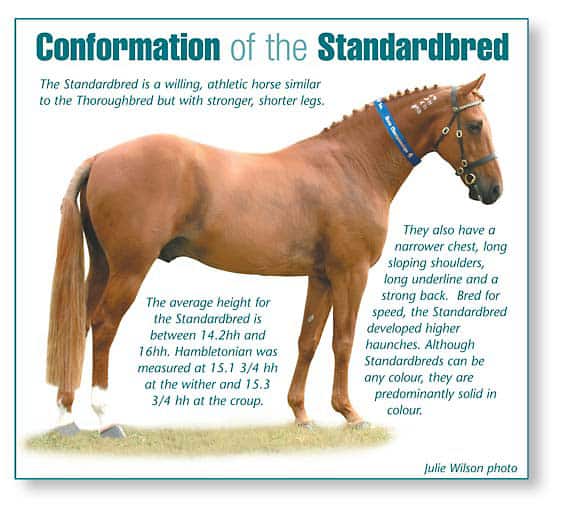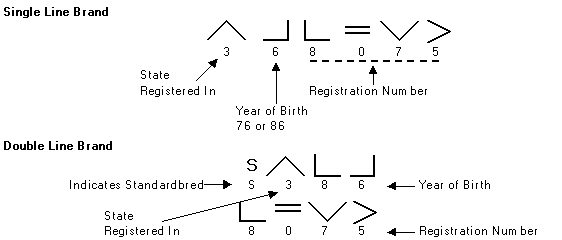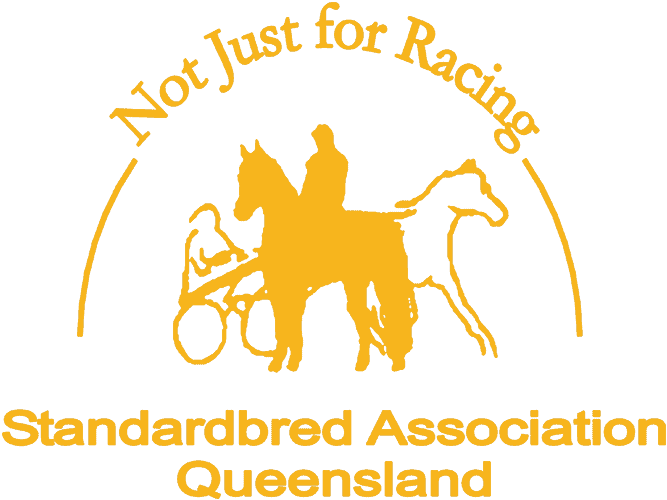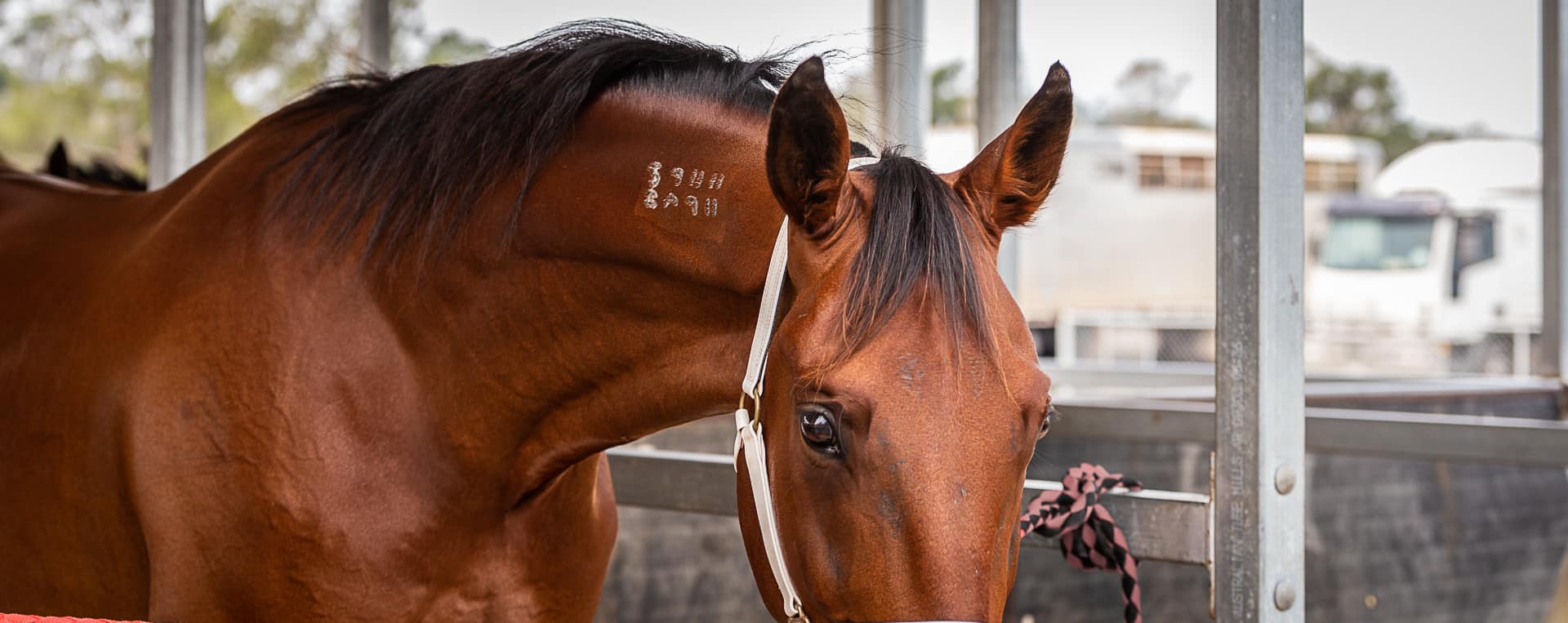The Origins of the Standardbred
“Those who know the breed will claim the Standardbred is one of the world’s best kept secrets. A breed that in addition to being the fastest horse in harness also excels under saddle and faces every task asked of it with gentleness, patience and a bottomless heart.”
The above quote, taken from Horse Illustrated, October ’93, accurately describes the Standardbred and is one of the reasons the Standardbred Pleasure and Performance Horse Association of Victoria (SPPHAV) exists today. Although bred for speed and stamina, we should think ourselves lucky that the Standardbred has a temperament that will take it to the top in many, if not all, equestrian sports.
The Standardbred is an ‘American Treasure’ that dates back nearly to that country’s roots. As the American population increased, so did the need for a faster, flashier looking horse to be used for transport purposes. An added bonus was to own a horse that could also bring in extra money at local weekend race meetings. As a result, the early American became fascinated with the idea of owning a fast carriage horse that could get them to work and also compete in the growing sporting arena. Because of this, selective breeding began.
Bloodlines from the Thoroughbred, Norfolk Roadster, Hackney, Morgan, Canadian Pacer and Cavalry horse, Cleveland Bay, Arab, Barb and of course Crossbred, were used to achieve the fastest, strongest harness horse with staying power. But the Standardbred really came into being in 1849 when William Rysdyk purchased a crippled mare with an ugly ‘cat haunched’ foal at foot for $US125.
The colt – Hambletonian – may not have been much to look at but he carried the bloodlines of Messenger, an English Thoroughbred sire that carried the bloodlines of the 3 main Thoroughbred foundation sires. With this ancestry behind him, Hambletonian went on to change the face of the American horse world. Hambletonian became the Standardbred foundation sire, passing on his ability to pace and trot at a fast speed to all his offspring – some 1,300 horses. Today, Hambletonian can be traced back in the bloodlines of almost 99% of registered Standardbreds.
Prior to Hambletonian, and to enable selective breeding to begin, only horses that could run a standard mile in less than 2 minutes 30 seconds were allowed to race. Only horses who met this criteria were used in the breeding process – thus became the name of the breed. The Standardbred.

The Standardbred, known as a kind and willing horse, is also ultimately defined as athletic.
The Standardbred is similar to the Thoroughbred but has stronger, shorter legs. They also have a narrower chest, long sloping shoulders, long underline and a strong back.
Bred for speed, the Standardbred developed higher haunches. When fully grown, Hambletonian was measured at 15.1 3/4 hh at the wither and 15.3 3/4 hh at the croup. The average height for the Standardbred is between 14.2hh and 16hh; their weight is usually between 900 to 1,200 lbs.
Although the Standardbred can be any colour, they are predominantly solid in colour.
Horses branded before 1988 will carry a single line brand. Those branded more recently will have a 2 line brand with the first figure being an S (ie Standardbred).
- The freeze brand is read from left to right.
- The first figure represents the state the horse was bred and foal identified in. This number corresponds to the first number in the postcode of the capital city of the state of registration ie. 2 is for New South Wales, 3 Victoria, 4 Queensland, 5 South Australia, 6 Western Australia and 7 Tasmania.
- The second figure represents the year of birth of the horse or the year the horse was foal identified.
- The remaining figures represent the horse’s registration number.
- The brand is made up of the eight points of two squares placed so as to represent an eight pointed star, and two other symbols.

How the symbols that form the brand are created.

Examples of how single line and double line brands will look.

New Zealand Standardbred brands are based on this character set
Originally bred for harness racing, the Standardbred has only recently begun to be recognised in other equestrian activities.Even though the Standardbred has been classed as a breed since 1897, and entered into the American Trotting Register since 1882, because of the original requirement to trot or pace a standard mile in 2 minutes 30 seconds, most people have not accepted the Standardbred as a breed, assuming it to be a mongrel horse.
Slowly, but surely, the Standardbred is making waves in the equestrian world. Below is a list of some world renown Standardbreds and their achievements for excellence in sport.
|
Jenny Camp (owner) |
Silver medal winner in the 1932 and 1936 Olympic Games. |
|
Halla |
Ridden by Hans Winkler. Achieved success in many world class competitions. |
|
Kayla |
1992 Canadian High-Point Endurance Champion. |
|
Ultimate Rancher |
Showjumper successfully competing in Australia. |
|
Double Take |
Ridden by Mark Todd. Partbred Champion showjumper. |
The ultimate dressage horse is still in the making. Some Warmblood breeders are now breeding with Standardbred mares in order to achieve the best. These breeders realise that the Standardbred has a lovely, natural, elevated and forward movement – perfect for dressage. The Standardbred’s strong bone structure also adds to the strength of the horse. With the help of the SPPHAV, the Standardbred will become truly recognised as a pleasure and performance horse, as well as an exhilarating harness racer.
Notes to Help You Train Your Standardbred to Saddle
If you are considering buying a Standardbred or have recently acquired one – Great choice! You will have a friend for life when you own a Standardbred. Much like a faithful pet dog, you will find your Standardbred will want to please you in return for a happy enjoyable life.
Yes, they can take longer to get moving correctly under saddle. Just know that you will not be alone here and with time and patience the Standardbred can conquer most, if not all, that you ask of it.
When looking at Standardbreds, consider what discipline you wish to do. Showjumping, dressage, trail riding, western…. the list goes on. Standardbreds come in many shapes and sizes. Some are small and wide, others small and narrow. Some are long in length, some have shorter backs. They range in height from under 14hh to over 17hh but, commonly they range between 14.2hh to 16hh. If you are unsure of the correct type of horse you need, seek more knowledgeable advice from a more experienced friend or a professional such as an instructor or from the SPPHAV.
In our opinion it is best to train your Standardbred yourself, even if you are novice in riding and with horses. While most Standardbreds that have just stopped racing, or race training, can be saddled and sat on without problems, we suggest that you spell your horse for a few weeks, adjusting feeds from the hotter feeds given to racing Standardbreds to a feed program more suitable to your pleasure horse. Spend this time getting to know your horse, take it for walks, brush and comb it, sit in their paddock just spending quality time together. When you decide it is time to put the saddle on your horse, make sure you have someone there with you, holding your horse until you are settled in the saddle. There is nothing wrong with having your friend or partner lead you and your horse for a few minutes before you take control of the reins yourself. If you are having riding lessons, have them on your new horse.
The following are some pointers designed to guide you in the right direction when re-educating your Standardbred. You must consider that a Standardbred straight-off-the-track is “green” when it comes to riding.
If you are a confident rider you should be able to do most of the training by yourself – best with the occasional help of a riding instructor. Train your Standardbred as you would train a hack.
If you are novice, make sure you select a suitable Standardbred. We recommend you look at horses that are over 5 years of age and, preferably, one that has done a fair amount of racing. Anything younger may not suit a novice / new rider. Better still, you could be lucky and find a Standardbred for sale that has already had some riding miles. Trail riding places often use Standardbreds and some are happy to sell them on to private homes. If you are a novice rider you might consider sending your new Standardbred to a reputable trainer for some initial basic training. The time factor, for this training, should be discussed with the trainer taking into consideration your, and the horse’s abilities.
Trail ride your new Standardbred as much as possible. This will settle your horse, under saddle, quickly. It will help strengthen your horse for riding and the bond, between you both, will form and grow.
Long rein your Standardbred regularly. Long reining can be used to help your Standardbred get balanced, not to lean in, not to race around and, most importantly, to create and perfect your transitions without ‘chasing’.
The Trotter. Trotters usually have a long back and can take a little longer to strengthen through the top line, than a pacer will. Obviously a Trotter will not amble or pace – but they do have a big trot. Long reining and working over trot poles will help bring the trot back to a medium stride suitable for riding. Some Trotters will trot very fast, rather than canter. This is where working on transitions on the long rein will help create your canter transition which, in turn, will lead to your canter.
The Pacer. Obviously Pacers have 5 gaits – walk, trot, canter, pace and gallop. Some like to amble, rather than trot. The amble is a slow relaxed pace. The Pacer can make a very elegant ridden horse and they seem to adapt a little quicker than the Trotter. To stop your Standardbred from pacing under saddle, you need to help balance it by long reining. Every time your horse paces, you say no and go back to the walk if you are trying to trot or to the trot if you are trying to canter. Correct transitions need to be established and it is best to use the long rein when working on the trot to canter transition. As your Pacer becomes stronger through the top line, the canter will progress from a few strides to a full circle. Always encourage any little bit of effort given by your Standardbred so it understands that it is the canter, not the pace, you are after. On a trail ride, use the same principal – say no and stop the pacing whenever your horse falls into the pace. Some Pacers need little work and will canter quite well from the start while others can take 12 months, or more, of regular work to produce a competition level collected canter.
Remember, these notes are only a guide to help you understand what may be required with your Standardbred, not a training program.
Be patient, your Standardbred will achieve walk, trot and canter under saddle. Time is the essence, the more hours you can put towards your training each week, the faster you will achieve your goal. One to two hours a week may not be enough in the initial training period.
Also, make your training sessions “fun’ for your horse. Flat work one day, a trail ride the next, then (say) long reining on another day. Even go out for walks together and see what you and your friend can get up to! Reward your Standardbred with hugs and pats and by stopping. If your Standardbred has truly tried hard and achieved what you have asked of it, the best reward is to finish up for the day.
Basic equipment that you will need to get your horse working under saddle includes:
- Loose ring snaffle bit and bridle
- Lunging roller
- Long reins and whip
- Saddle to suit the discipline of your choice and ideally fitted to your Standardbred
- Riding boots, do not attempt to ride in sneakers or other shoes
- An approved riding helmet
The Standardbred is a very honest horse, and horses love to play. So, enjoy! And we hope to see a lot of people out and about
Standardbreds can do more than just harness racing…they make a fantastic a first horse and you won’t find a better, more reliable friend!
Further Reading
For further information about Standies, download “Understanding Standardbreds, A Lucan Lodge Rider Guide” here.
Frequently Asked Questions about Standies…
What societies besides Harness Racing are there for Standardbreds?
There are organisations Australia-wide that support the Standardbred. Besides the harness racing bodies in each state, there are the Standardbred Pleasure and Performance Horse Associations (SPPHA) in most states of Australia. The SAQ is the Queensland body for short, and we run our own shows each year and have campaigned for a large number of Standardbred show rings at various locations around the State. We also have State Championships in showing, dressage and showjumping.
Is it true that Standardbreds can only trot or pace?
No, a Standardbred is a horse first and can canter and gallop just like any other horse. It’s sometimes true that a Standardbred that has come straight off the track (retired from racing) and is a pacer may find it a little difficult to trot or do a three beat canter at first, because it’s using a different set of muscles and been tranied to pace at speed. However with time and training they learn to use new sets of muscles and supple up a little more.
Another interesting fact is that all horses can pace and sometimes you’ll see young foals of any breed pace a little, just to test out and use different muscles.
Can Standardbreds canter in circles?
Yes…you’ll even see Standardbreds competing in dressage competitions. Again, horses that have not been taught, or are recently off the track will take a bit more education but they will learn to canter in a circle, just like other horses.
What colours do they come in?
Standardbreds mostly favour bay colours, plus some chestnuts, blacks and greys. Then there are the striking ‘coloured’ Standardbreds that are now eligible to compete in Pinto show classes.
What can Standardbreds do after racing?
Believe it or not you’ll see Standardbreds competing in dressage, endurance, showjumping, eventing, trail riding, Pony Club and Adult Riders…in fact in almost every discipline except thoroughbred racing! Many trail riding establishments use Standardbreds because they are generally calm and reliable horses. The Standardbred is also one of the preferred horses used by Riding for the Disabled.
They are very hardy, mostly due to the fact that a Standardbred in race training will be exercised for up to 14 kilometers a day in one session, when in race training. Many people own a Standardbred because it may have been their first horse, it may have been less expensive to purchase or they needed a horse they could learn on. There are quite a few adult riders and Pony Club members who own a Standardbred and they have probably all found how powerful the bond between them and their horse becomes.
This article has been reproduced with kind permission of SPHHA Vic.

Adopt A Standy

Become a Member

